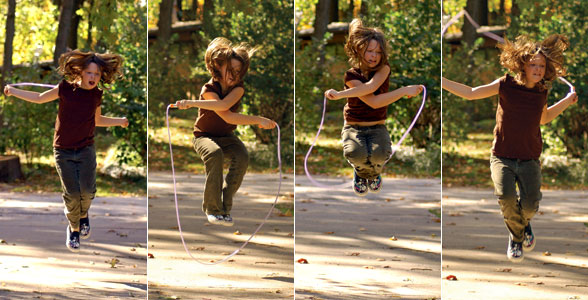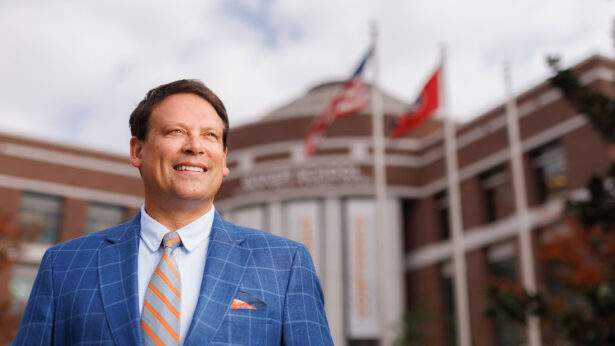By Diane Ballard
Ed Howley has had both his knees replaced, but the wiry 65-year-old is systematically getting back to his former active lifestyle. He can walk 18 holes of golf (something he couldn’t do for several years before surgery), goes for long rides on his bike, works out, and is trying to find his way back to the racquetball court.
If Howley, a retired UT Knoxville exercise physiologist, is a poster child for fitness, it’s because he, more than most, knows the profound importance of physical activity. He served as one of just 13 members of the advisory committee for the new document Physical Activity Guidelines for Americans, issued last October by the U.S. Department of Health and Human Services (DHHS). Howley has more than 35 years of experience with the science and practice of fitness.
In a nutshell, the gist of the new guidelines is that regular physical activity over months and years can produce long-term health benefits.
What’s new about this? We’ve heard for years that exercise is good for us, and many of us are familiar with the 30 minutes of exercise a day recommended by a U.S. Surgeon General’s report in 1996. But in 2006, the Institute of Medicine organized a workshop, sponsored by DHHS, to determine whether there was enough evidence to merit developing official U.S. physical activity guidelines. Scientists and physical activity practitioners who attended agreed that, yes, there was, and the advisory committee was formed. The committee, its subcommittees, and outside consultants examined every piece of research since 1996 related to physical activity and health.
“I’ve never worked harder in my life,” Howley says. “The amount of literature we evaluated was incredible.” The purpose was to question, to probe scientific weak spots, to challenge assumptions. “We asked each other over and over, ‘Have you gone too far? Does the literature support what you just said?’ ”
At the end of the process, the committee gave its science-based recommendations to DHHS, which, after input from the public and government agencies, issued its guidelines.
The guidelines are similar in form and purpose to the well-known Dietary Guidelines for Americans. The physical activity guidelines, printed in part on page 19, cover major groups—children, adults, older adults, people with disabilities, and pregnant and postpartum women.
The guidelines for healthy adults recommend 2½ hours a week of moderately intense physical activity, such as brisk walking. The change from the earlier recommendation of 30 minutes a day, at least 5 days a week, was the result of the advisory committee’s analysis of research.
 “There was no evidence that thirty minutes a day is better for you than longer periods of exercise done on fewer days a week” or shorter periods done more frequently, Howley says. “The new guidelines give people more flexibility. A ten-minute walk counts toward your weekly goal.”
“There was no evidence that thirty minutes a day is better for you than longer periods of exercise done on fewer days a week” or shorter periods done more frequently, Howley says. “The new guidelines give people more flexibility. A ten-minute walk counts toward your weekly goal.”
As one who has devoted his career to fitness (member of the President’s Council on Physical Fitness, president of the American College of Sports Medicine), Howley is particularly concerned about the absence of physical activity from the lives of so many youngsters.
“The amount of inactivity is dramatic. The number of kids graduating from schools overweight and with full-blown diseases we used to see only in adults is shocking,” he says.
It’s a “pay me now or pay me later” situation, Howley says. Either invest the time and money on the front end to encourage physical activity and provide safe spaces for it, or pay later to treat the health maladies that result from obesity and inactivity.
He is optimistic about progress. More bike paths, walk-to-school programs, and new physical activity programs in schools are hopeful signs. Communities are coming together to support initiatives that promote physical activity, for example, building sidewalks. More people are realizing the importance of physical activity and speaking out in its support.
“Active adults inspire active kids,” he says. “College-educated people can be movers and shakers, particularly those that are politically active. PTAs can be unbelievably effective. Everyone can have an impact by speaking out for safe streets.”
Safety can make the difference between an active and an inactive child, Howley says. “If kids have safe opportunities, they can figure out how to be physically active.”
Being an older adult himself, Howley also focuses some special attention on that group.
“Strengthening the muscles is very important for the elderly. That helps keep older people functioning and independent.” Balance-related training such as yoga or tai chi is also excellent to help prevent falls.
“For older adults, physical activity has been designed right out of our lives,” he says. Drive-up ATMs, remote controlled TVs, and portable phones contribute to the decline in physical activity.
The obesity epidemic in the U.S. has to do with factors other than activity-limiting conveniences. “We have easy access to relatively inexpensive, highly palatable high-fat foods,” Howley says. “We have to become more aware of how many calories we eat and learn how to eat a healthy diet—something covered in detail in the Dietary Guidelines for Americans.”
He emphasizes that physical activity is good for you even if you don’t lose weight. If you’re overweight or obese and want to begin an exercise program, he advises caution.
“Start slowly. Go for a five-minute walk and gradually build up to a ten-minute walk. Also, get help adjusting your dietary intake. Remember you can cut three hundred calories from your diet fairly easily, but it’s not as easy to expend three hundred more calories a day.”
Those who’ve lost a lot of weight and want to keep it off need to exercise more than the recommended 2½ hours a week (150 minutes). “Those people may need to exercise three hundred minutes a week and watch their dietary intake too,” Howley says.
Howley wears a pedometer to track the number of steps he takes per day. Studies suggest 10,000 steps per day is a reasonable goal for fitness benefits. The pedometer readings “give you something to shoot for,” he says.
After all the work that went into the new Physical Activity Guidelines, Howley wants to see them updated regularly. “I hope Congress will set up a mechanism to systematically update the guidelines every five years like the dietary guidelines.” The two sets of guidelines provide complementary ways to achieve the same goal: better health and longer life.
The Guidelines Tell Us
- Regular physical activity reduces the risk of many adverse health outcomes.
- Some physical activity is better than none.
- For most health outcomes, additional benefits occur as the amount of physical activity increases through higher intensity, greater frequency, and/or longer duration.
- Most health benefits occur with at least 150 minutes (2½ hours) a week of moderate-intensity physical activity like brisk walking. Additional benefits occur with more physical activity.
- Both aerobic (endurance) and muscle-strengthening (resistance) physical activity are beneficial.
- Health benefits occur for children and adolescents, young and middle-aged adults, older adults, and those in every studied racial and ethnic group.
- The health benefits of physical activity occur for people with disabilities.
- The benefits of physical activity far outweigh the possibility of adverse outcomes.
Guidelines for Adults (18–64)
Adults should do either 2½ hours a week of moderate-intensity or 1 hour and 15 minutes a week of vigorous-intensity aerobic physical activity, or a combination. Aerobic activity should be performed in episodes of at least 10 minutes, preferably spread throughout the week.
Increasing to either 5 hours a week of moderate-intensity aerobic physical activity or 2½ hours a week of vigorous-intensity physical activity, or a combination of both, provides additional health benefits.
Adults should also do muscle-strengthening activities that involve all major muscle groups performed on two or more days per week.
More information and guidelines for children, older adults, people with disabilities, and pregnant and postpartum women: www.health.gov/PAGuidelines/.



